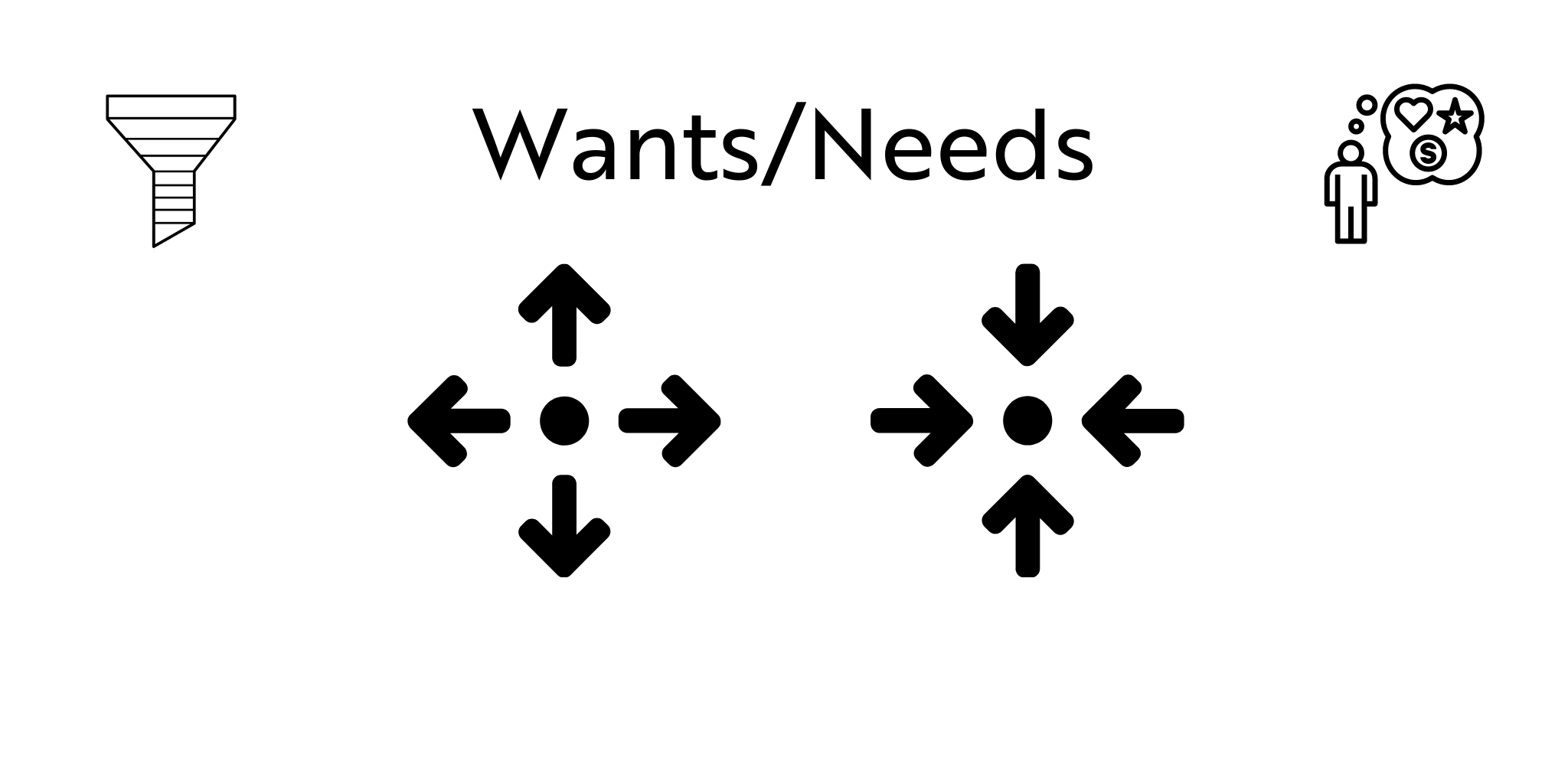What Are Your Customers Wants and Needs?
Your messaging needs to pull at the need while also giving the dopamine hit of want. You can never get to the need without the want satisfied. It’s like the gatekeeper to the inner sanctum.

For Sutro, it seems obvious that pool owners want a hassle-free, crystal clear pool that their friends and family can enjoy. If you ask them, that’s generally what they say. This would be their need.
If you stop there, you’re only getting half the story since a want is the most obvious external result you can come up with. It is mechanical and mostly obvious. What we want to get at the heart of is how the want translates into the internal need.
For Sutro, it’s not obvious what the need is for a pool owner. Some would say it’s the peace of mind that their water is safe. Still, others would say it’s to make their family and friends happy to go for a swim. Surprisingly, there is a lot of emotions in owning a pool (or spa).
It’s actually a little more complex than that. For pool owners, the biggest headache is keeping their pool water in balance. It’s actually the central problem in the pool and spa industry. In fact, every product and service in the pool and spa industry is focused directly or indirectly on water -- containing it, measuring it, treating it, and having fun in it.
Scratching an Itch
Knowing that the external want is hassle-free, crystal clear pool water, then what would the internal need be. To give you a hint, an internal need is usually an emotion that the customer feels. It’s an internal feeling that lies beneath the surface that’s within your subconscious. It’s almost like it gnaws at your bones until you throw it another. We’ll share Sutro’s customer needs later on when we help you do your own wants and needs.
Your messaging needs to pull at the need while also giving the dopamine hit of want. You can never get to the need without the want satisfied. It’s like the gatekeeper to the inner sanctum.
Steps to Find a Customers Wants and Needs
Recall that wants and needs have to do with the external result and the internal feeling. One feeds on the other in sometimes non-obvious ways. In order to determine your customer’s wants and needs, consider the following questions, preferably with your whole team.
Question #1: What job does your product or service get done?
The jobs to be done framework is a great way to understand the wants and needs interplay. It actually goes straight for the need as opposed to the want. In our drill example, a customer wants a drill but needs a bunch of round roles. This is at the heart of finding a need.
After you answer this job your product or service gets done, ask yourself why. Why does this job need to be done? Ask why 5 times until you dig down to the core job to be done.
Question #2: What feelings does the customer feel when the job is done right?
A job done right will make your customer feel a certain way. This feeling is what we’re after and while we can understand the job that gets done from question #1 above, we want to get at the response to a job well done.
Write down at least five feelings that the job done right will make your customer feel. These words can be anything you can think of. Don’t limit yourself to what you might promise in your copy.
Question #3: How far along the core value spectrum does the customer travel after using your product or services?
The power of selecting a core value for your offering is that it has these wants and needs baked into them. The core value spectrum is a mix of wants and needs. These values were chosen exactly because they fix into the core emotion people will feel as they use your product or service.
Write down the value shift that your offering gives the customer. Think of the most negative to the most positive. After each value shift, write down a brief description of how the shift occurs (good or bad).
Question #4: What would others say or feel about your customer successfully using your product or service?
While needs are mostly internal (actually the strongest ones are), they can be driven by what others think and feel as well. Especially those that your customer respects and admires. This is especially important for Status brands since the main emotion of status is how others think makes you feel.
Write down what a friend or family member of a customer would say about the results of your product or service. What would they feel? What emotions would they have towards your customer?
Finding Your Customers Wants/Needs
Once you have answered the questions, it’s now time to clearly write down your wants and needs into single, declarative sentences. We must stress that the wants and needs must be simple and encapsulated in a single sentence -- kinda like your Big Idea.
If you did the questions above with a team (which we recommend), take a look at the overlaps. Are there any common themes that emerge? Common words. Common feelings.
Once you have found the common themes, write down at least three sentences for each want and need. Have the team do the same. As you refine your wants and needs, it will become apparent what you and your team think about them.
Take the three wants and needs from each team member and do the same theme analysis. Find the one for each that match. Those will be your wants and needs.
Sutro’s Wants and Needs
For a pool owner, that gnawing feeling is pride. There is not a pool owner on the planet that does not want to feel pride in a well-maintained, crystal clear pool -- even if it’s a hassle. This need is the ultimate driver of behavior and while the want is strong, the emotional pull of the need will win out every single time.
For Sutro, the wants and needs are:
Want: A hassle-free, crystal clear pool that their friends and family can enjoy.
Need: A sense of pride that they have the perfect pool and are the envy of their friends and family.
This is consistent with a Performance-Status company. Performance in the sense that you will get a crystal clear pool and status in the sense that your friends and will be impressed by your performance. It’s these two things that must be present in your communications throughout the Story Funnel.
The Practical Aspects of Wants and Needs
Now that we understand your customer’s wants and needs, we need to structure our offering to meet those wants and needs. We also need to figure out the channel in which we are selling our offering. This may seem like a little too late in the process to figure this out, but it’s actually the exact right time. Why?
We don’t want our Core Value, Big Idea, and Wants and Needs to be influenced by the type of offers we have or where were will be selling them (or even how). That’s something that needs to be clear but it’s never obvious the channel for selling or the mix of offerings we have to provide to be successful. Sometimes it’s not even clear who you might have to sell to or the combination of channels to sell in. That’s up next.
Are you ready to figure out what to sell and who to sell it to?

